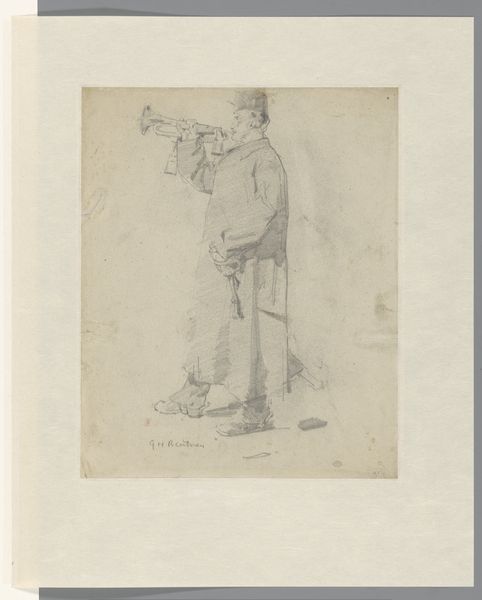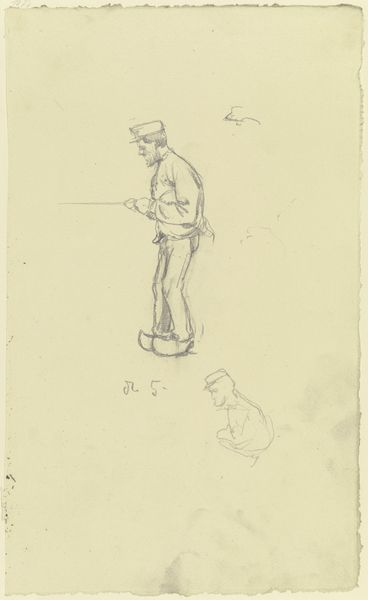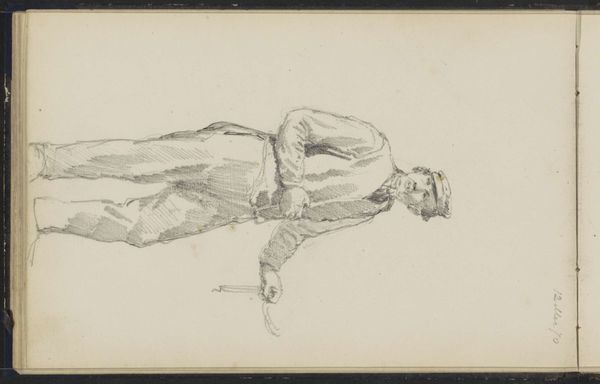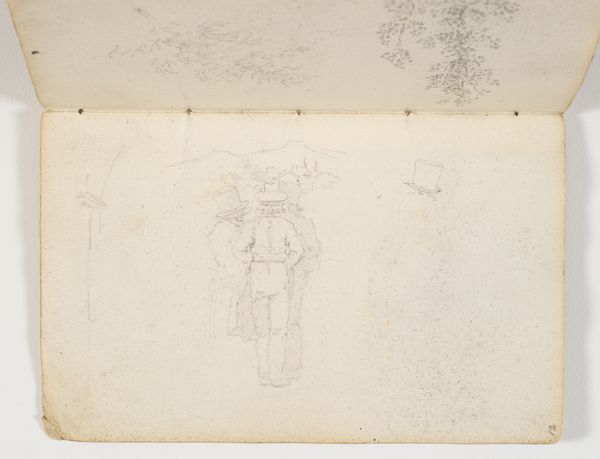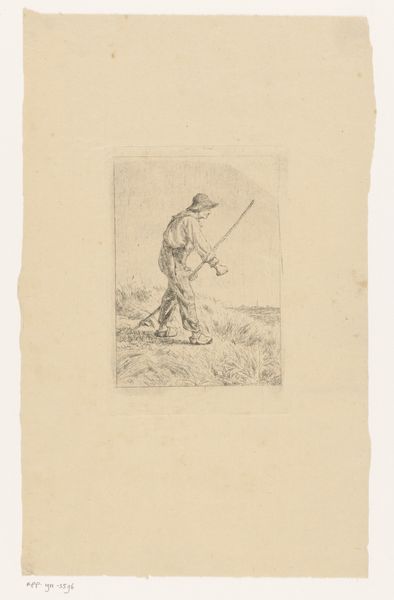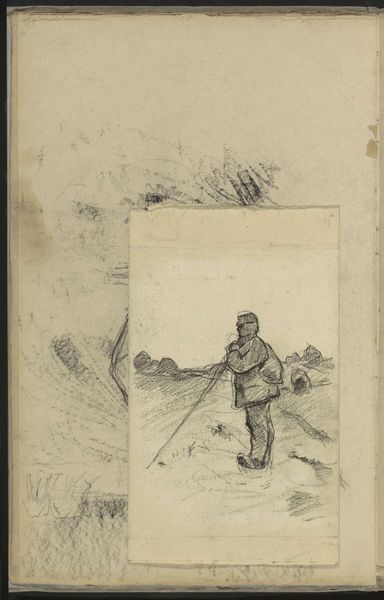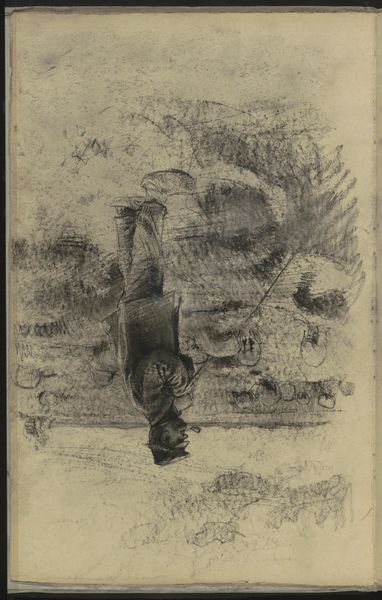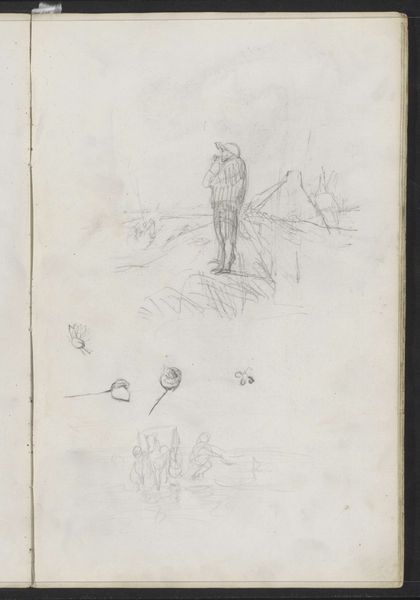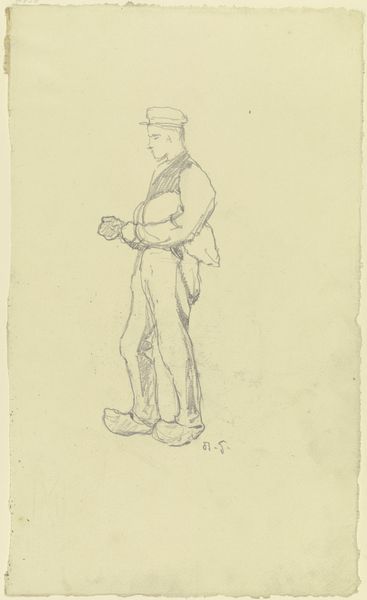
Copyright: Rijks Museum: Open Domain
Curator: The first impression I have when looking at this drawing is of loneliness. The figure looks solitary. Editor: And perhaps stoic, wouldn’t you say? We're looking at “Lopende man op klompen,” or “Man Walking on Clogs,” a pencil drawing on paper created by Jozef Israëls between approximately 1885 and 1911. Curator: The clogs are a particularly important signifier. Notice how Israëls used them to ground the figure to the landscape but they can also convey the subject’s class status and connection to manual labor. It makes you consider his background, the circumstances that might shape his worldview. Editor: Absolutely. And let's talk about those clogs for a moment. Consider the labor involved in making them, carving and shaping wood into a functional object, connecting it to the Dutch landscape. It speaks to a history of local industry and artisanal skill, linking the man to a specific economic reality. Curator: True, and the walking itself is quite suggestive, implying purpose, direction, and perhaps even wandering. Are we witnessing the everyday journey of a working man, or something more symbolic like the passage of time or a life’s journey? It could allude to the simple, often hard lives led by many during that period. Editor: Indeed. The means of production— pencil and paper—were relatively accessible, enabling the artist to quickly capture an intimate moment. It's a far cry from grand historical paintings; it’s immediate, raw, a direct engagement with everyday life and perhaps a glimpse into social structures. The trace of the artist's hand on paper—so intimate! Curator: I agree, and it almost echoes a collective memory, a shared experience of life as something very tangible, very material. The visual language Israëls uses evokes a certain historical empathy for those often forgotten individuals and moments. Editor: So, we're left contemplating not just the image but also the invisible structures that shape both its creation and our interpretations, and by association, our modern selves. It feels profoundly cyclical when you stop to think about the labor still obscured by the sheen of contemporary culture. Curator: Yes, art from this time speaks to universal, and unfortunately timeless, truths. The figure walks onward, both familiar and full of unspoken narrative.
Comments
No comments
Be the first to comment and join the conversation on the ultimate creative platform.
